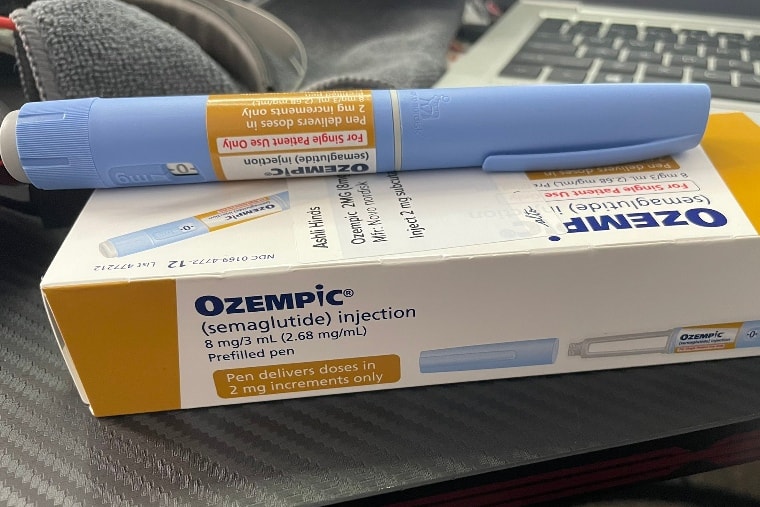Can Ozempic Mess With Your Period?

Menstruation is a woman’s monthly bleeding, often called your “period.” When you menstruate, your body discards the monthly buildup of the lining of your uterus (womb). Menstrual blood and tissue flow from your uterus through the small opening in your cervix and pass out of your body through your vagina.
During the monthly menstrual cycle, the uterus lining builds up to prepare for pregnancy. If you do not get pregnant, estrogen and progesterone hormone levels begin falling. Very low levels of estrogen and progesterone tell your body to begin menstruation.
Your menstrual cycle is counted from the first day of your period up to the first day of your next period. Your hormone levels (estrogen and progesterone) usually change throughout the menstrual cycle and can cause menstrual symptoms. The changing hormone levels as well as the use of certain medications can affect your menstrual cycle and other health problems.

What is Ozempic?
Ozempic is a once-weekly injectable drug formulated to help adults with type 2 diabetes manage their blood sugar. Although not officially a weight loss drug, research suggests that people who take Ozempic may lose modest amounts of weight while on the medication. In fact, the active ingredient in Ozempic, known as semaglutide, is FDA-approved at higher doses for treating individuals living with obesity and other weight-related medical problems under the name Wegovy.
What is Ozempic’s dosage?
Your doctor will recommend the dosage of Ozempic that’s right for you. Below are commonly used dosages, but always take the dosage your doctor prescribes.
Form and strengths
Ozempic comes as a liquid solution inside prefilled, disposable pens. The following table shows which strengths Ozempic pens come in. The strengths are written as milligrams of semaglutide (Ozempic’s active drug) per milliliter of solution (mg/mL).
| Strength | Dose given per injection |
| 2 mg/1.5 mL (this may also be written as 1.34 mg/mL) | 0.25 mg or 0.5 mg |
| 2 mg/3 mL (0.68 mg/mL) | 0.25 mg or 0.5 mg |
| 4 mg/3 mL (1.34 mg/mL) | 1 mg |
| 8 mg/3 mL (2.68 mg/mL) | 2 mg |
Recommended dosages
You’ll inject Ozempic once each week. You should use the medication on the same day each week. And try to inject it at about the same time on each of those days.
Your doctor may start you on a low dose of Ozempic for the first 4 weeks of treatment. This way, they can see how well Ozempic is working for you. After this, your doctor will likely increase your dose. Your adjusted dose will depend on your blood sugar levels and other factors.
Each Ozempic pen holds several doses of the drug. Your doctor or pharmacist will explain when you need to throw away each pen and start using a new one.
Ozempic and Missed Period
Ozempic can mess with your period in several ways because it works by increasing insulin sensitivity while inhibiting the liver from releasing glucagon to help lower blood sugar levels. High levels of insulin can interact with hormones responsible for regulating menstruation, leading to irregular or missed periods. In some cases, there may even be anovulation in which a person doesn’t ovulate completely.
Women taking Ozempic have reported the following complaints with their menstrual cycles:
- Longer duration of the menstrual cycle
- Shorter duration of the menstrual cycle
- Scanty or abnormal menstrual flow
- Painful menstruation
If your period is a few days late, it typically is not a cause for concern. But a period that’s a few weeks late may indicate an underlying condition. If you don’t have any known condition affecting your menstrual cycle, your period should start within 21 to 35 days of your last period, depending on your normal cycle.
What Are The Side Effects of Ozempic?
Common side effects of Ozempic include:
• nausea,
• vomiting,
• diarrhea,
• abdominal pain and constipation.
Ozempic may cause serious side effects including:
• a lump in the neck,
• difficulty swallowing,
• cough,
• shortness of breath,
• difficulty breathing,
• upper abdominal pain,
• nausea,
• vomiting,
• blurred vision,
• spots or dark strings floating in your vision,
• fluctuating vision,
• vision loss,
• dark or empty areas in your vision,
• shakiness,
• nervousness,
• anxiety,
• sweating,
• chills,
• clamminess,
• irritability,
• impatience,
• confusion,
• fast heart rate,
• lightheadedness,
• dizziness,
• hunger,
• decreased urination,
• swelling in your legs, ankles, or feet,
• fatigue,
• rash,
• itching, and
• shock
• Serious eye symptoms such as sudden vision loss, blurred vision, tunnel vision, eye pain or swelling, or seeing halos around lights;
• Serious heart symptoms such as fast, irregular, or pounding heartbeats; fluttering in your chest; shortness of breath; and sudden dizziness, lightheadedness, or passing out;
• Severe headache, confusion, slurred speech, arm or leg weakness, trouble walking, loss of coordination, feeling unsteady, very stiff muscles, high fever, profuse sweating, or tremors.
Get medical help right away, if you have any of the symptoms listed above.
You may find useful information on What Happens When You Stop Taking Ozempic For Weight Loss





